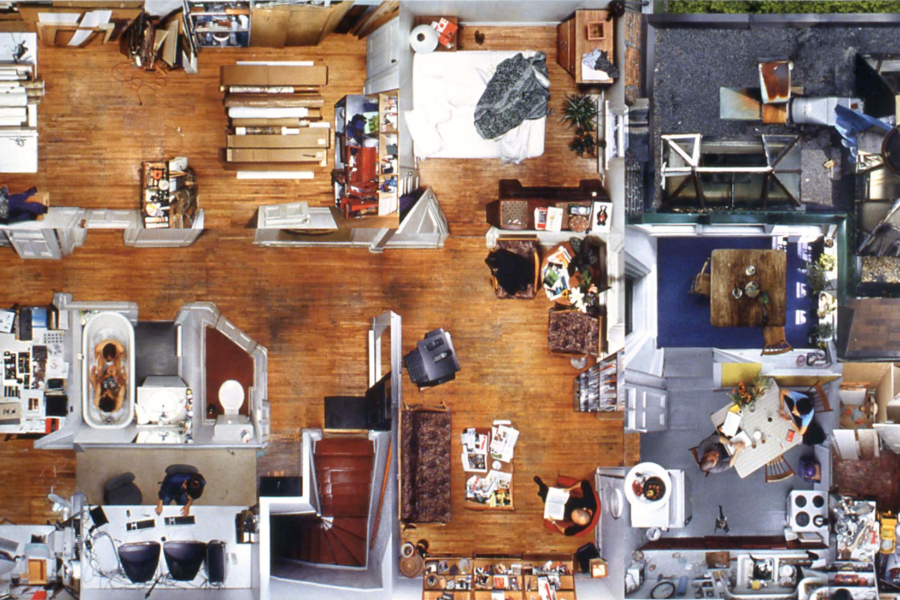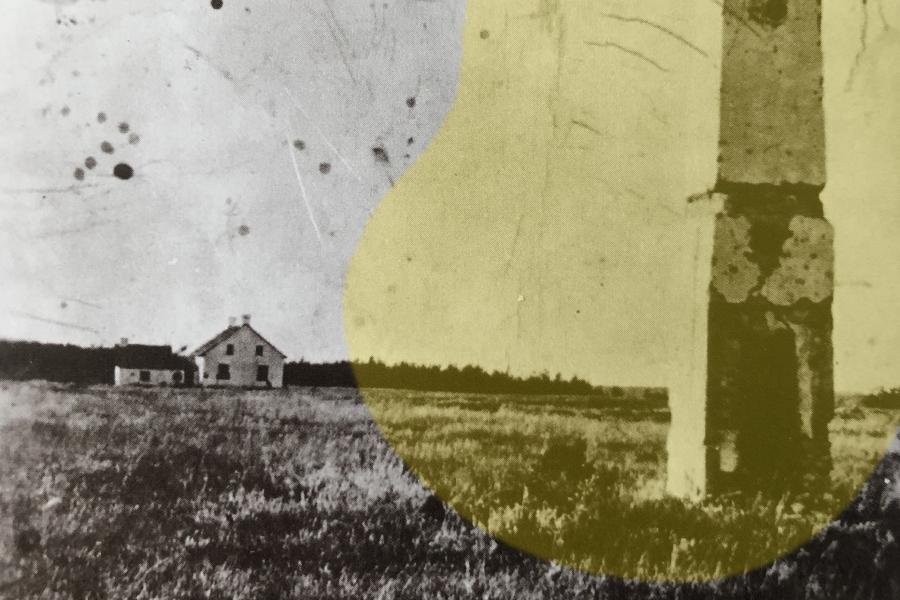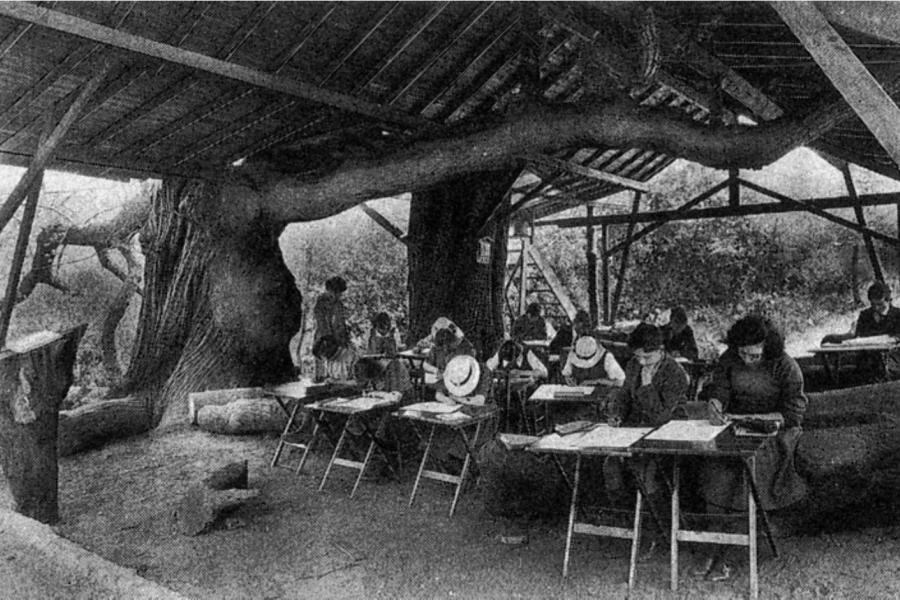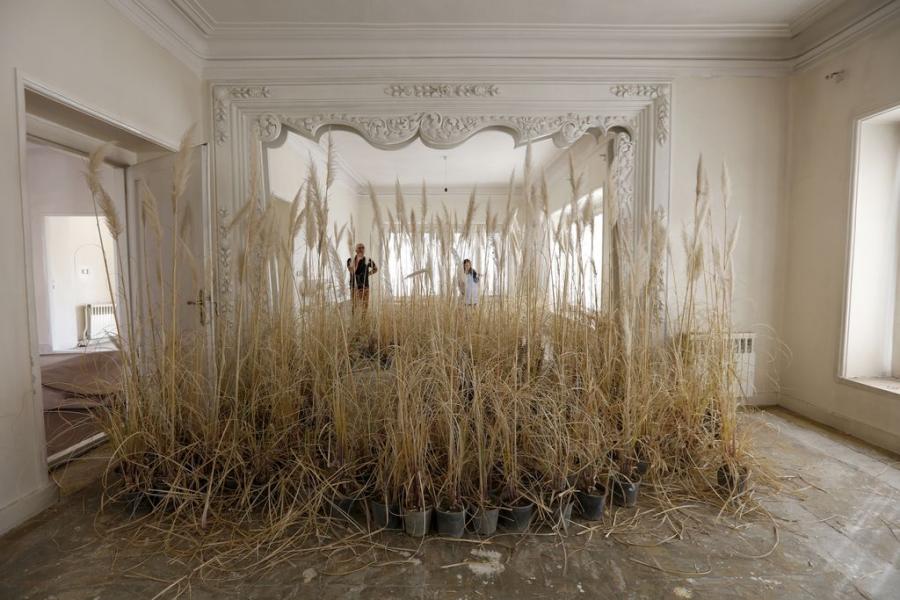2020 - 2021 Studio descriptions
Studio presentations will take place on Tuesday, September 8 at 10:00am. Information on the remote session has been distributed to students via email. See the 2020 - 2021 Welcome Letter for details about the studio selection / assignment process.
ED3/AMP1 studios

Learn more about Hyperlocal
A common strategy is to make the space say something about you. You add your own possessions, rearrange the furniture within the limits of the space, put your own posters on the wall, arrange a few books purposefully on the desk. Thus, space is turned into place. Your place… But place is also a way of seeing, knowing and understanding the world. When we look at the world as a world of places we see different things. We see attachments and connections between people and place. We see worlds of meaning and experience. Sometimes this way of seeing can seem to be an act of resistance against a rationalization of the world, a way of seeing that has more space than place.
—Tim Cresswell in Place: a short introduction
To dwell means to live our lives. To dwell also means to care for our home. As mortals, by living, we are already thinking of the earth, the sky, and the divine (because of inevitable death). To dwell, is to preserve the fourfold of earth, sky, mortality, and divinity.
—Martin Heidegger in Building Dwelling Thinking
Unlike “house,” which means an edifice to dwell, “home” can have multiple meanings, among them two: home as house, and home as to feel at home. The physiological term homeostasis (hoʊmioʊˈsteɪsɪs) combines homeo- and -stasis, a New Latin form from Greek the homoios or "similar" and stasis, "standing still", yielding the idea of "staying the same," which relates to feel at home, familiar, memorable, homebody, etc. Beyond the merely physiological and psychological, feeling at home reaches to our perceptive and cognitive systems: as architects we absorb the world in order to find plausible translations (architecture), and perception is central to the process of perceiving. When the options to move around these days seem forcefully reduced by an unpredictable pandemic, staying at home becomes the best option. So why not use this unique opportunity to dive in the hyperlocal spaces of domestic intimacy? In this new contradictory state, hyperlocal confuses with hyperglobal: without leaving the house we reach out to the vastness of the world through the Internet and digital technologies. This studio will reside within this gap, in between the physically immediate and the digitally expansive. Within this cavity lies a world of pure wonder and possibility.
The studio will investigate ways of surveying, mapping, measuring, memorializing, collecting, registering, recording, observing, teasing out modes of learning about space and architecture. Drawing will be the focus of these speculations. Keeping focus on the hyperlocal, we will use psychogeographic techniques to understand place and space beyond the eye by "studying the precise laws and specific effects of the geographical environment, consciously organized or not, on your emotions and behavior," as Guy Debord proposed in his ruminations around his situationist thinking. We will seek to find alternative representations and personal readings by roaming around the house and going around the block, digging like an archeologist at times, transforming your own local inside-out. Through restless observation and careful analysis, you will develop design tools from the ground up. Like pealing the many layers of the skin, we will gradually and slowly unveil the strata of authentic lived spaces, bursting the “bubble of self” that we all live in without being totally aware of it. Ultimately, understanding that architecture is essentially memorialized (past), lived (present) and propositional (future), we will develop creative exercises and design proposals connected to your own experience of dwelling. To help us further understand the implications of place and space we will read together, among others—Place: a short introduction by Tim Cresswell, Building, Dwelling, Thinking by Martin Heidegger, and At Home: A Short History of Private Life by Bill Bryson.

Archives of Manitoba. “View of Fort Ellice Site From 1919,” in More Abandoned Manitoba, by Gordon Goldsborough (Winnipeg, Great Plains Publications, 2018)
Learn more about Topo Illogical II
“The hardest thing of all to see is what is really there. Books about birds show pictures of the peregrine, and the text is full of information. Large and isolated in the gleaming whiteness of the page, the hawk stares back at you, bold, statuesque, brightly coloured. But when you have shut the book, you will never see that bird again. Compared with the close and static image, the reality will seem dull and disappointing. The living bird will never be so large, so shiny-bright. It will be deep in landscape, and always sinking farther back, always at the point of being lost. Pictures are waxworks beside the passionate mobility of the living bird.” 1
J.A. Baker, The Peregrine
J.A. Baker spent 10 years watching peregrine falcons over the marshes of Essex before writing his novel The Peregrine. In its pages he details his accounts of birds in the landscape just beyond his backyard and frames them not as objects of fetish or to own as a falconer might, but as complex and developed characters he seeks to see more deeply and understand more intimately.2 Through this process, his words describe more than the object of his focus. They build a picture of a place and moment continually falling away from the viewer, always changing and constantly aware of the human presence as a disturbance in that landscape. This re-seeing of what we hubristically think of as familiar allows surprising elements of the most real to come bubbling to the surface.
Topo Illogical II is a studio fundamentally motivated to probe the unseen or unassuming materials and relationships that comprise the built world. In response to the current circumstances of quarantine, the studio will foster alternative modes of vision and critique for our understanding of the local region. As studies escalate from our immediate surroundings through the middle ground of our metropolitan area to the remote backdrop of the broader Manitoba region, we will leverage the unfamiliar we carefully unpack from the assumed. Tying history to regionality, to materiality, to resource extraction, to ruin, the goal is to construct a more holistic picture of place and practice. By ceasing to treat architectural constructions as object compositions and instead engaging them as temporary states in flowing systems of time, matter and ecology, we can lay the foundations of critical empathy in design that the craft and practice of architecture requires of us. In speaking about the sticky and interconnected reality of matter in architecture, David Leatherbarrow writes:
“…in the world of artifacts, there is really no ”thing in itself.” In a work of architecture, nothing exists apart from the efforts and intentions that brought it into being and visability.”3
With this focus, the studio will collectively consider and test a proposed model of topological thinking. Rather than engaging the idea of topology in architecture as a drive towards tortured geometric computations in service of an aesthetic or imagined totality, Topo Illogical II will use it as a model to examine architecture as an artifact lodged in systems and context.
Work will ascend in scope; beginning with exercises examining a material palette teased from the natural and constructed context of the city. The studio will extract, process, tool, and assemble this matter as full scale constructed contemplations, celebrating the improvisations and limitations of our own context along the way. Discoveries gleaned from this process will serve as motive in the design of small dwellings as well as a broader historical and regional research project to serve as the grounding for the winter term.
Notes:
1Baker, J. A., The Peregrine (New York: Harper & Row, 1967), 36.
2Cynthia Zarin, “Time Out: The Beauty of J. A. Baker’s “the Peregrine,”” New Yorker, April 17, 2017.
3Leatherbarrow, David, Architecture Oriented Otherwise (New York: Princeton Architectural Press, 2009), 81.

Learn more about Exchange Studio
The Maypole, The Bodhi Tree, The Sacred Grove, The Great Pillar, The Peach of Immortality, The Tree of the Knowledge of Good & Evil, The Etz Chaim, The Kabbalah, The Axis Mundi, The Tree of Life, The Cardinal Directions, Grandmother Cedar, Nookomis Giizhig, Kalpavriksha, Yggdrasil, Thor's Oak, The Sacred Tree at Uppsala, Borjgali, The Tree of Immortality, Tūbā, The Maple Tree, Tannenbaum, The Hindu Grove, The Enchanted Forest, The Juniper Tree, The Fir Tree, The Sacred Oak, The Family Tree.
[but then, Planks, Boards, Studs, Joists, Nailers, Rafters, Beams, Piles, Logs, Furring, Pegs, Purlins, Collars, Trusses, Posts, Knees, Stringers, Sprockets, Shingles, Shakes, Sheets, Frames, Sills, Jams]
This studio will explore the worlds of trees & woods and new ways to dwell among them.

Learn more about _____________________________.
“So long as humanism is constructed through contrast with the object that has been abandoned to epistemology, neither the human nor the nonhuman can be understood.”
We have never been modern. Bruno Latour
“We don't know who discovered water, but we know it wasn't the fish..”
Marshall McLuhan
“At a time when an important part of humankind has shut itself up in enclosed spaces and been obliged to relinquish movement, nature has crept forward to occupy the spaces we have ceded,” this was conceptual artist eugenio ampudia’s response when asked what inspired him to create his performance art piece, a concert for the biocene. The concert for the biocene took place on June 22, 2020, when the barcelona’s el liceu opera house reopened with a performance by the UceLi string quartet playing to a tranquil audience of 2,292 potted plants.
At the end of the performance the musicians bowed to the audience; a consensual gesture of the body that speaks of deep respect and gratitude. This ubiquitous act, in all its simplicity, together with the event itself, single-handedly positioned music, art, man, and nature among a common space; both physically and politically.
It was the significance of this synchronicity between man and nature, along with the profound display of consciousness the performance encouraged that directly inspired the discourse for this studio.
Calling for action, this studio intends to capsize our anthropocentric approach and explore architectural space through the lens of a biological time span and anamorphic space of the “biocene”; Inviting nature to advance across the threshold, ceding our colonial definitions of “territory”.
Image: behind-the-scenes of artist Gohar Dashti’s “home” series. Hamed Noori/Courtesy of Gohar Dashti
